55 School Funding Referendums Approved
Across the state local voters support record level of new resources for schools.
This year, voters in Wisconsin voluntarily raised property taxes on themselves by a record amount to pay for additional investments in local schools. The increase could signal a growing frustration with the strict limits on school district budgets that have been imposed by state lawmakers.
The state limits the average amount each school district may spend to educate students, but voters in a district can override the spending limit by approving a referendum lifting the spending caps and raising their property taxes. Voters also determine via referendum whether to allow a school district to issue debt for big capital projects, such as building a new school.
Given the budget constraints imposed by the state, school districts have been increasingly likely to ask voters to approve new resources – and voters are increasingly likely to approve them. On Tuesday, voters approved 55 of the 67 school funding referendums on the ballot (82%), and over the course of 2016 they have approved a record level of new resources for education, including:
- $317 million in increases in per-student spending that expire after a certain number of years;
- $51 million in increases in per-student spending that continue indefinitely; and
- $1.4 billion in new borrowing for building and facilities construction or improvements.
These totals represent a significant increase from past years. For example, the amount approved in 2016 for increases in revenue limits that continue indefinitely was more than the amount approved in 2009, 2010, 2011, 2012, 2013, 2014, and 2015 – combined. And the amount of new borrowing that voters approved this year is more than the amount approved in 2013, 2014, and 2015, all combined. (The increase in the dollar amount for non-recurring referendums was less dramatic.)
Last session, some lawmakers tried to limit the opportunities voters had to approve new resources for schools. Their efforts weren’t successful, but it’s possible the proposal may come up for consideration again in next year’s legislative session. The record levels of new resources approved by voters in 2016 show that making it more difficult for school districts to go to referendum would have the effect of thwarting the will of Wisconsin voters.
Wisconsin Budget
-
Charting The Racial Disparities In State’s Prisons
 Nov 28th, 2021 by Tamarine Cornelius
Nov 28th, 2021 by Tamarine Cornelius
-
State’s $1 Billion Tax Cut Leaves Out 49% of Taxpayers
 Sep 21st, 2021 by Tamarine Cornelius
Sep 21st, 2021 by Tamarine Cornelius
-
TANF Program Serves a Fraction of Poor Families
 Aug 30th, 2021 by Jon Peacock
Aug 30th, 2021 by Jon Peacock


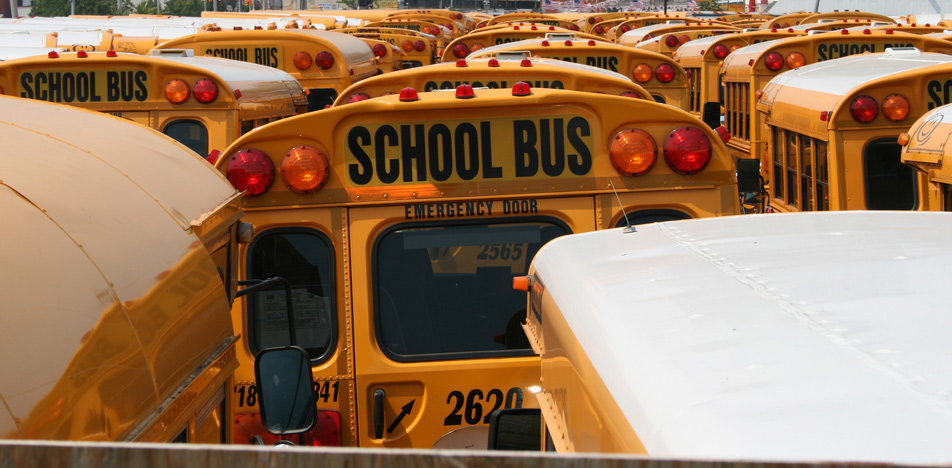
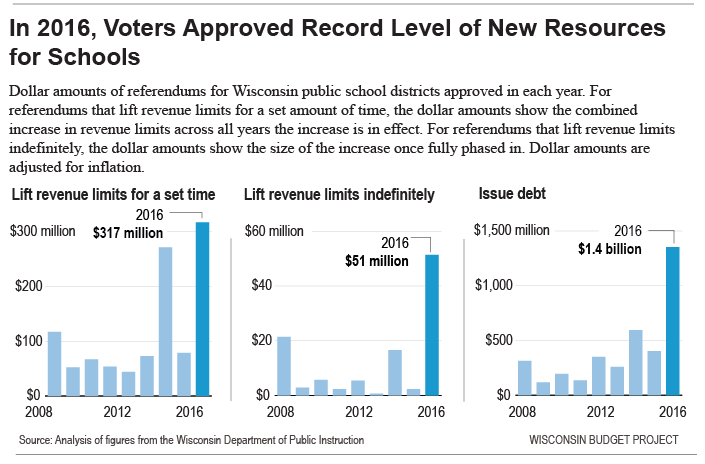

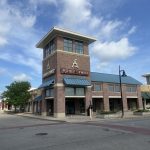
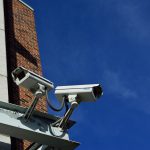
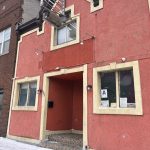
















This is not surprising–though it shows that most citizens in Wisconsin, not just parents of school-age children, place a high-value on adequately supporting public education.
Nonetheless, the downside is that school districts with high need, such as Milwaukee, will probably continue to limp along with relatively even fewer resources. Some schools have sports facilities rivaling the pros. Some schools don’t even have playgrounds or sports programs. And then state legislators from those wealthy communities threaten to further punish our defunded Milwaukee schools.
This is the way it should be. About 12% of the districts are poorly run.
Now the people get a chance to check them out and decide, at the local level what should be done. Schools are LOCAL and should be.
Why should the whole site pony up for the losers.
I’m confused by that ^^^.
Tamarine, is there any rumor of a renewed effort to further limit referenda? I know that Stroebel and his followers continue to chip away at local control (http://host.madison.com/wsj/news/local/govt-and-politics/gop-proposals-would-limit-wisconsin-school-districts-ability-to-raise/article_01dfd1b8-e594-50d8-83b7-5b1d840ef632.html), but where is the opposition? Besides from the local school boards?
I wonder why people paint a district as poorly run when they float a referendum? Don’t successful companies offer more stocks when they are expanding? Didn’t the Packers do that?